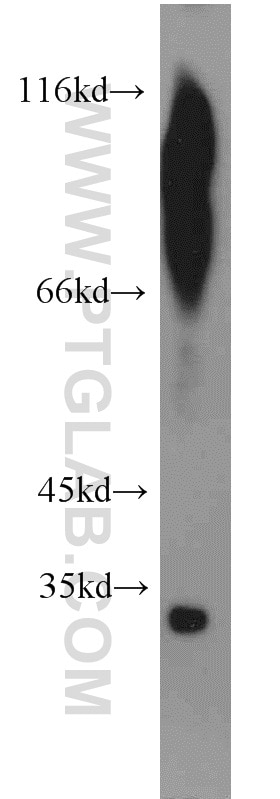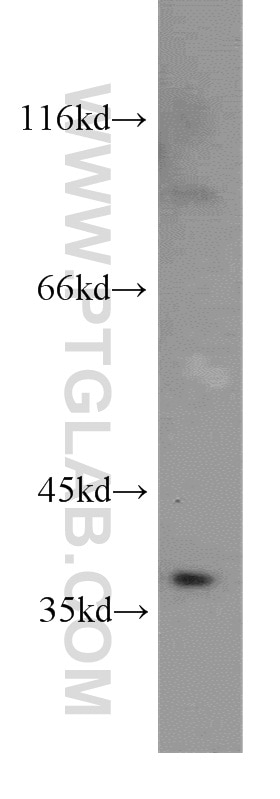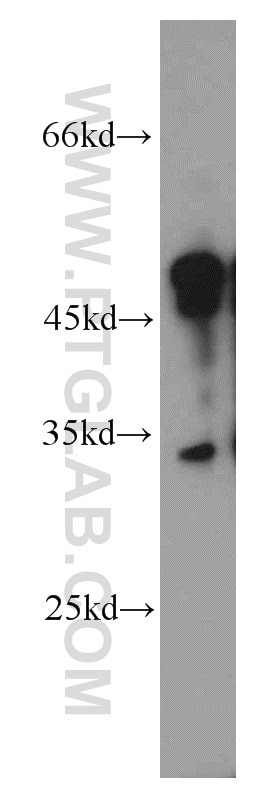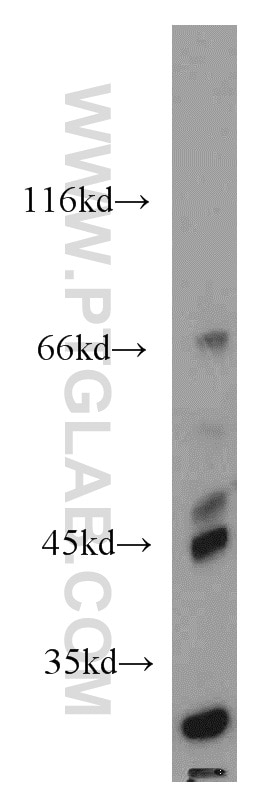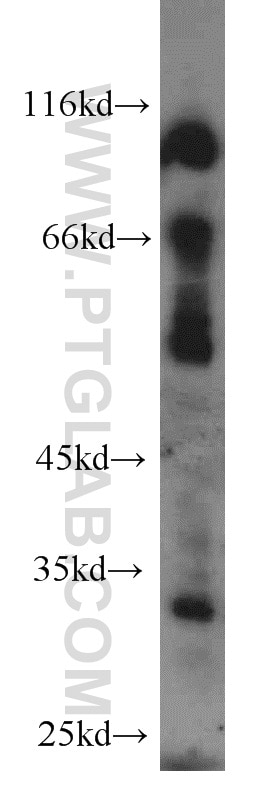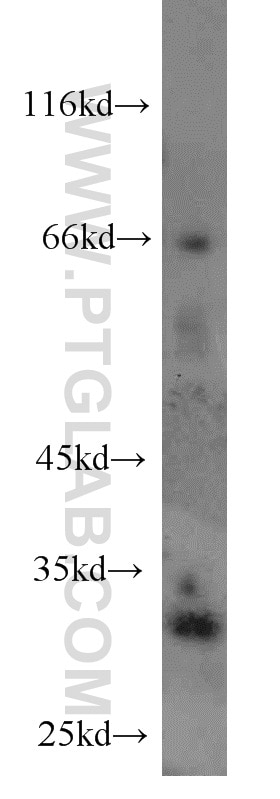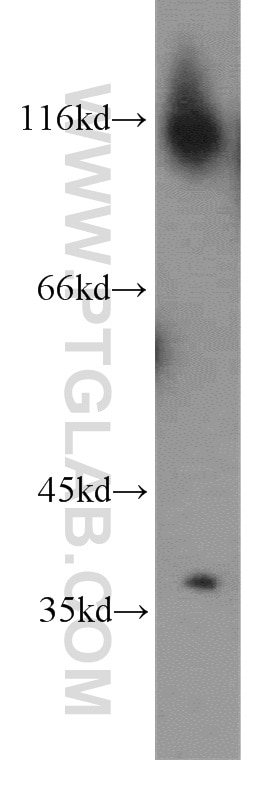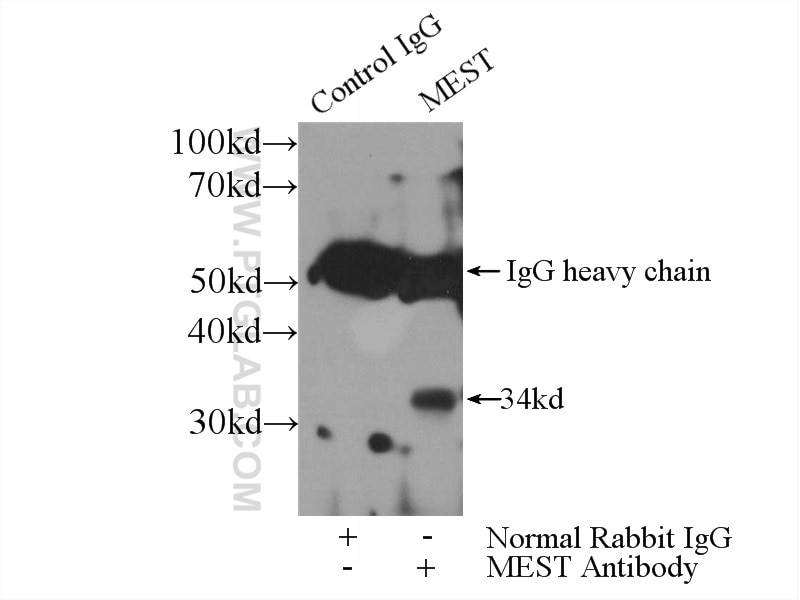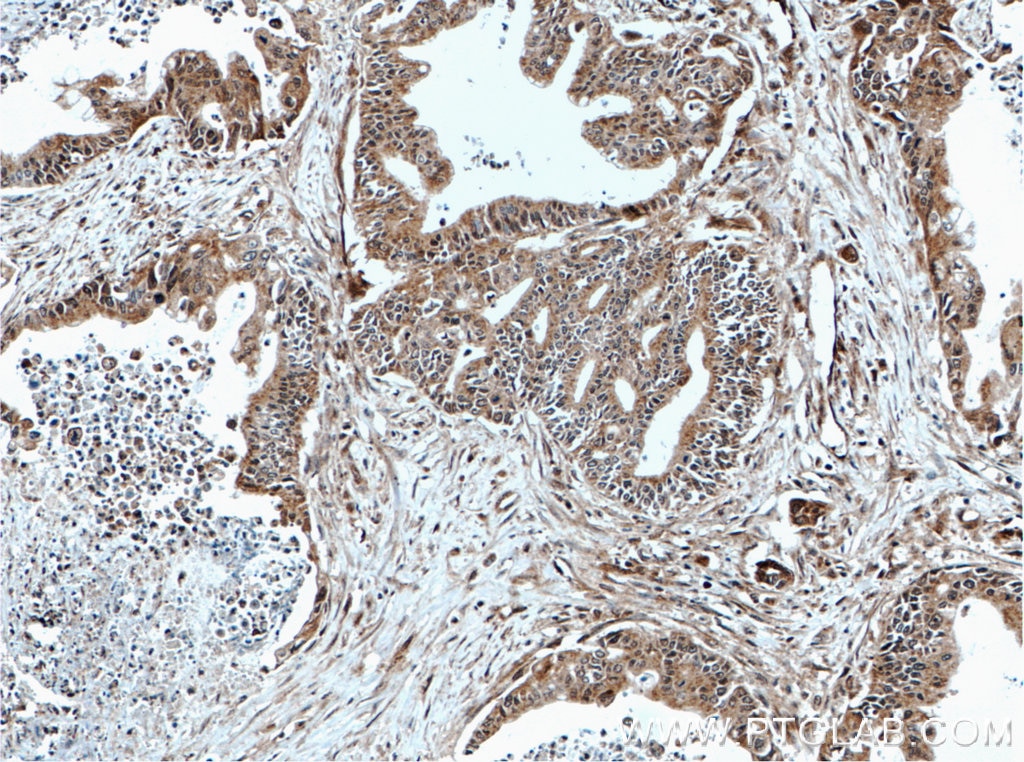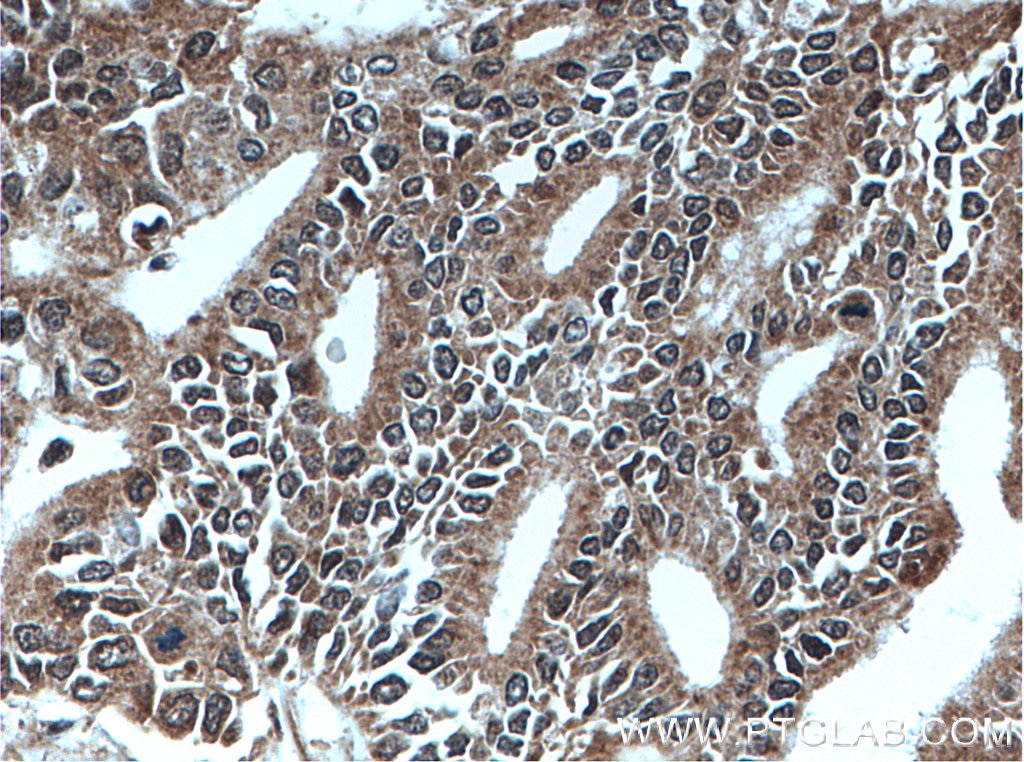- Featured Product
- KD/KO Validated
MEST Polyklonaler Antikörper
MEST Polyklonal Antikörper für WB, IP, IHC, ELISA
Wirt / Isotyp
Kaninchen / IgG
Getestete Reaktivität
human, Maus, Ratte
Anwendung
WB, IP, IF, IHC, ELISA
Konjugation
Unkonjugiert
Kat-Nr. : 11118-1-AP
Synonyme
Galerie der Validierungsdaten
Geprüfte Anwendungen
| Erfolgreiche Detektion in WB | humanes Hodengewebe, Maushodengewebe, PC-3-Zellen |
| Erfolgreiche IP | PC-3-Zellen |
| Erfolgreiche Detektion in IHC | humanes Pankreaskarzinomgewebe Hinweis: Antigendemaskierung mit TE-Puffer pH 9,0 empfohlen. (*) Wahlweise kann die Antigendemaskierung auch mit Citratpuffer pH 6,0 erfolgen. |
Empfohlene Verdünnung
| Anwendung | Verdünnung |
|---|---|
| Western Blot (WB) | WB : 1:500-1:1000 |
| Immunpräzipitation (IP) | IP : 0.5-4.0 ug for 1.0-3.0 mg of total protein lysate |
| Immunhistochemie (IHC) | IHC : 1:50-1:500 |
| It is recommended that this reagent should be titrated in each testing system to obtain optimal results. | |
| Sample-dependent, check data in validation data gallery | |
Veröffentlichte Anwendungen
| KD/KO | See 2 publications below |
| WB | See 9 publications below |
| IHC | See 3 publications below |
| IF | See 3 publications below |
Produktinformation
11118-1-AP bindet in WB, IP, IF, IHC, ELISA MEST und zeigt Reaktivität mit human, Maus, Ratten
| Getestete Reaktivität | human, Maus, Ratte |
| In Publikationen genannte Reaktivität | human, Maus |
| Wirt / Isotyp | Kaninchen / IgG |
| Klonalität | Polyklonal |
| Typ | Antikörper |
| Immunogen | MEST fusion protein Ag1617 |
| Vollständiger Name | mesoderm specific transcript homolog (mouse) |
| Berechnetes Molekulargewicht | 38 kDa |
| Beobachtetes Molekulargewicht | 34 kDa |
| GenBank-Zugangsnummer | BC011908 |
| Gene symbol | MEST |
| Gene ID (NCBI) | 4232 |
| Konjugation | Unkonjugiert |
| Form | Liquid |
| Reinigungsmethode | Antigen-Affinitätsreinigung |
| Lagerungspuffer | PBS mit 0.02% Natriumazid und 50% Glycerin pH 7.3. |
| Lagerungsbedingungen | Bei -20°C lagern. Nach dem Versand ein Jahr lang stabil Aliquotieren ist bei -20oC Lagerung nicht notwendig. 20ul Größen enthalten 0,1% BSA. |
Hintergrundinformationen
MEST(Mesoderm-specific transcript homolog protein) is also named as PEG1 and belongs to the AB hydrolase superfamily. The gene is a imprinting gene, which is associated with growth of mesodermal origin cells(PMID:20339302) and plays important roles in embryo development(PMID:21375506). It is also a novel regulator of Wnt/CTNNB signalling during adipogenic differentiation(PMID:21375506). It has 3 isoforms produced by alternative splicing and the full length protein has a glycosylation site.
Protokolle
| Produktspezifische Protokolle | |
|---|---|
| WB protocol for MEST antibody 11118-1-AP | Protokoll herunterladen |
| IHC protocol for MEST antibody 11118-1-AP | Protokoll herunterladen |
| IP protocol for MEST antibody 11118-1-AP | Protokoll herunterladen |
| Standard-Protokolle | |
|---|---|
| Klicken Sie hier, um unsere Standardprotokolle anzuzeigen |
Publikationen
| Species | Application | Title |
|---|---|---|
Cell Death Dis α1,3-fucosylation of MEST promotes invasion potential of cytotrophoblast cells by activating translation initiation | ||
Nucleic Acids Res Tissue-specific alternative polyadenylation at the imprinted gene Mest regulates allelic usage at Copg2. | ||
Gynecol Oncol Increased co-expression of MEST and BRCA1 is associated with worse prognosis and immune infiltration in ovarian cancer. | ||
Cancer Lett Novel target genes responsive to the anti-growth activity of triptolide in endometrial and ovarian cancer cells. | ||
Placenta DNA methylation-associated repression of MEST/PEG1 expression contributes to the invasion of extravillous trophoblast cells.
| ||
Placenta Maternal obesity and gestational weight gain are modestly associated with umbilical cord DNA methylation. |
